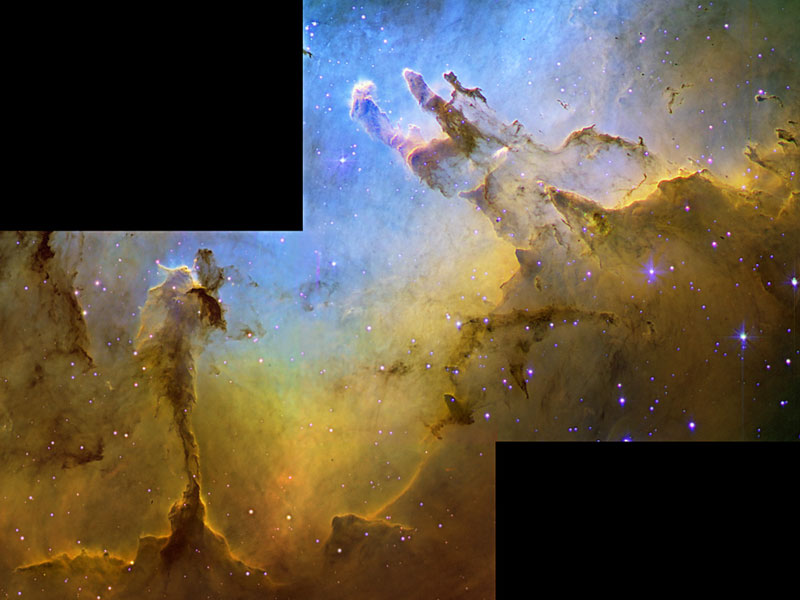
|
Credit & Copyright: IAC,
Daniel Lopez
Explanation:
Bright blue stars are still forming in the
dark pillars of the
Eagle Nebula.
Made famous by a
picture from the
Hubble Space Telescope in 1995, the
Eagle Nebula shows the dramatic process of star formation.
To above picture taken by a
0.8-meter telescope
in the Canary Islands
captures part of M16, the
open cluster of stars that is being created.
The high amount of detail in the above image results from it being taken only in
specific colors of light emitted by
hydrogen,
oxygen, and
silicon.
The bright blue stars of
M16 have been continually forming over the past 5 million years,
most recently in the famous central gas and
dust columns that have been informally dubbed the
Pillars of Creation and the
Fairy.
Light takes about 7,000 years to reach us from
M16, which spans about 20
light years and
can be seen
with binoculars toward the constellation of the Serpent
(Serpens).
|
January February March April May June July August September October November December |
| ||||||||||||||||||||||||||||||||||||||||||||||||
NASA Web Site Statements, Warnings, and Disclaimers
NASA Official: Jay Norris. Specific rights apply.
A service of: LHEA at NASA / GSFC
& Michigan Tech. U.
Based on Astronomy Picture
Of the Day
Publications with keywords: M 16 - Eagle Nebula
Publications with words: M 16 - Eagle Nebula
See also:
